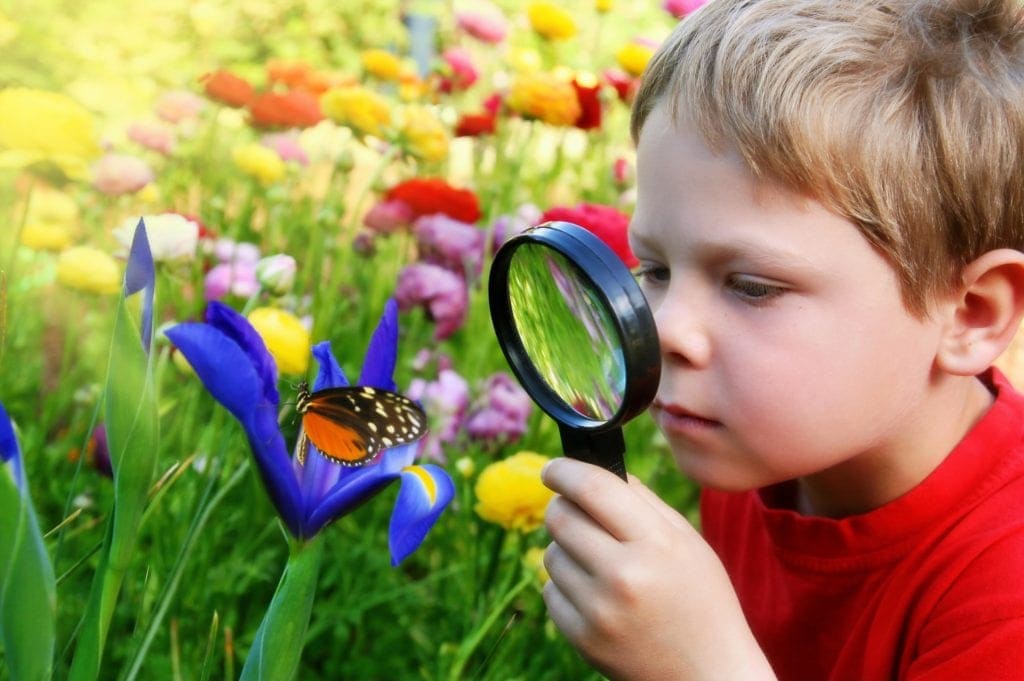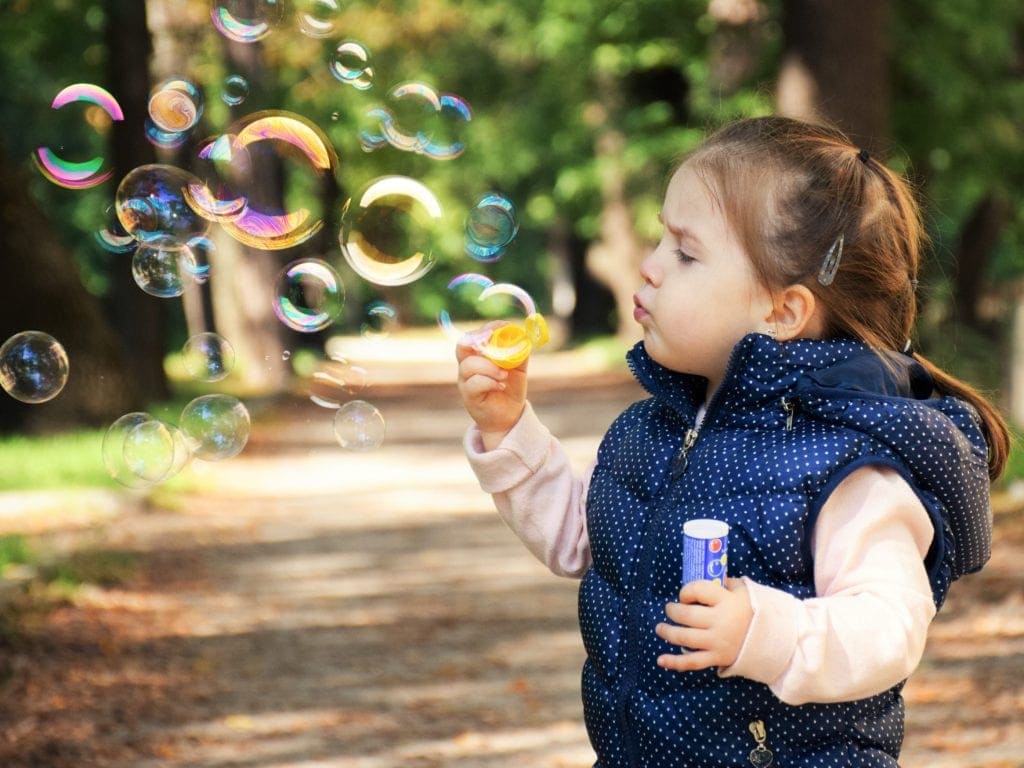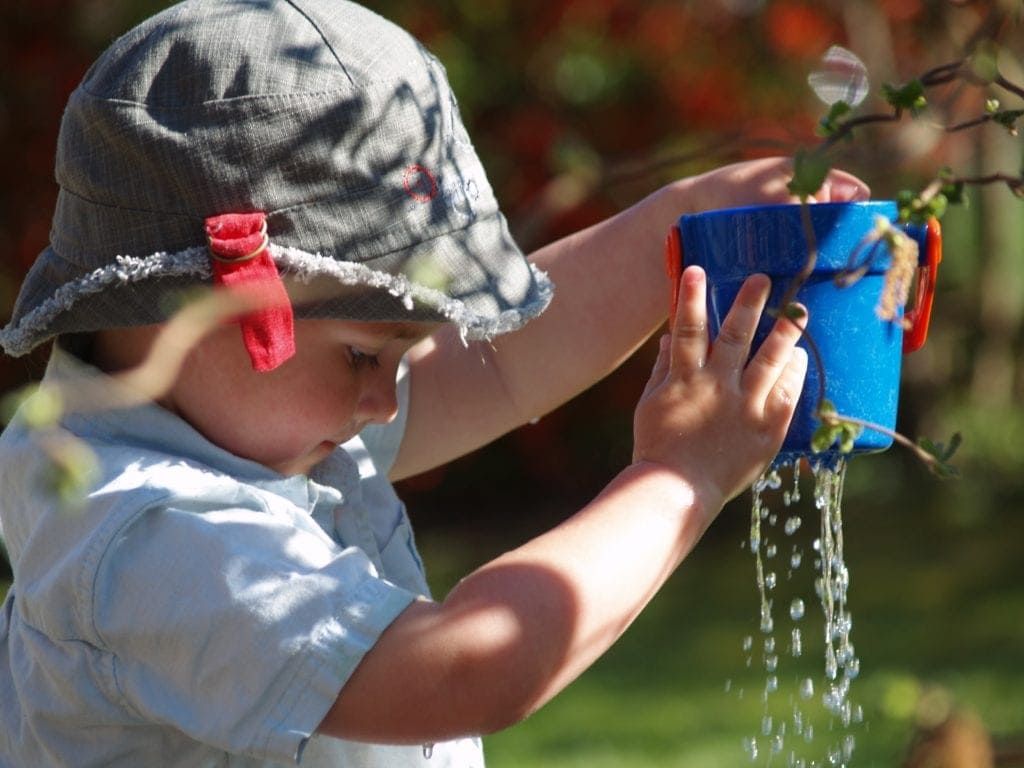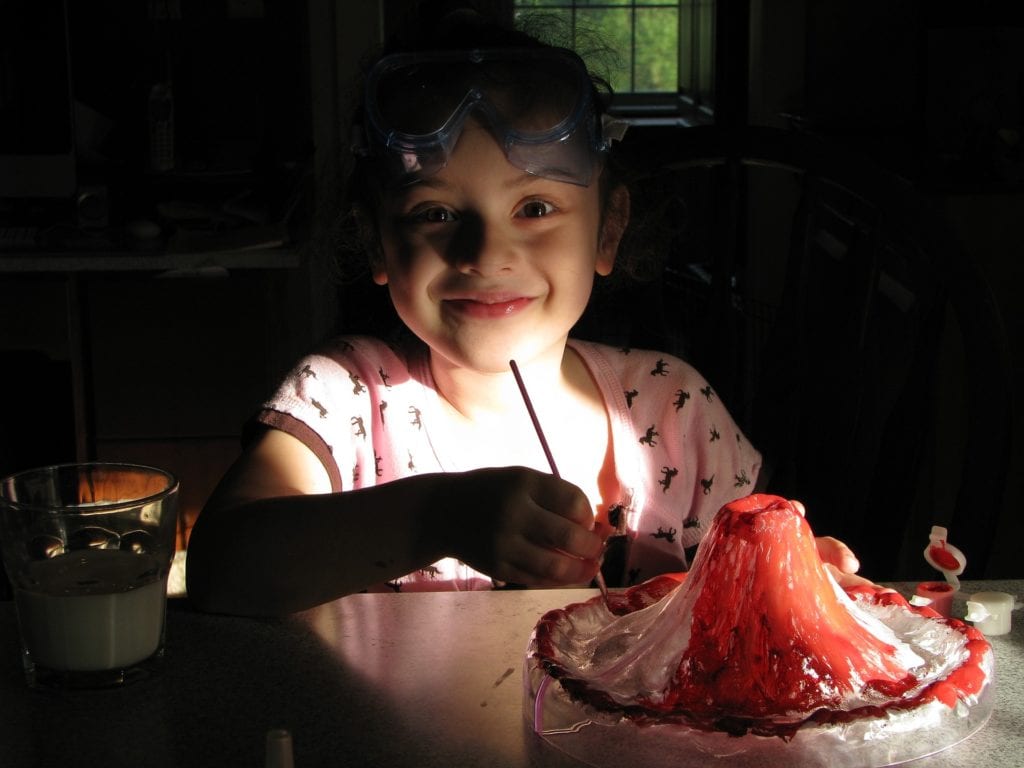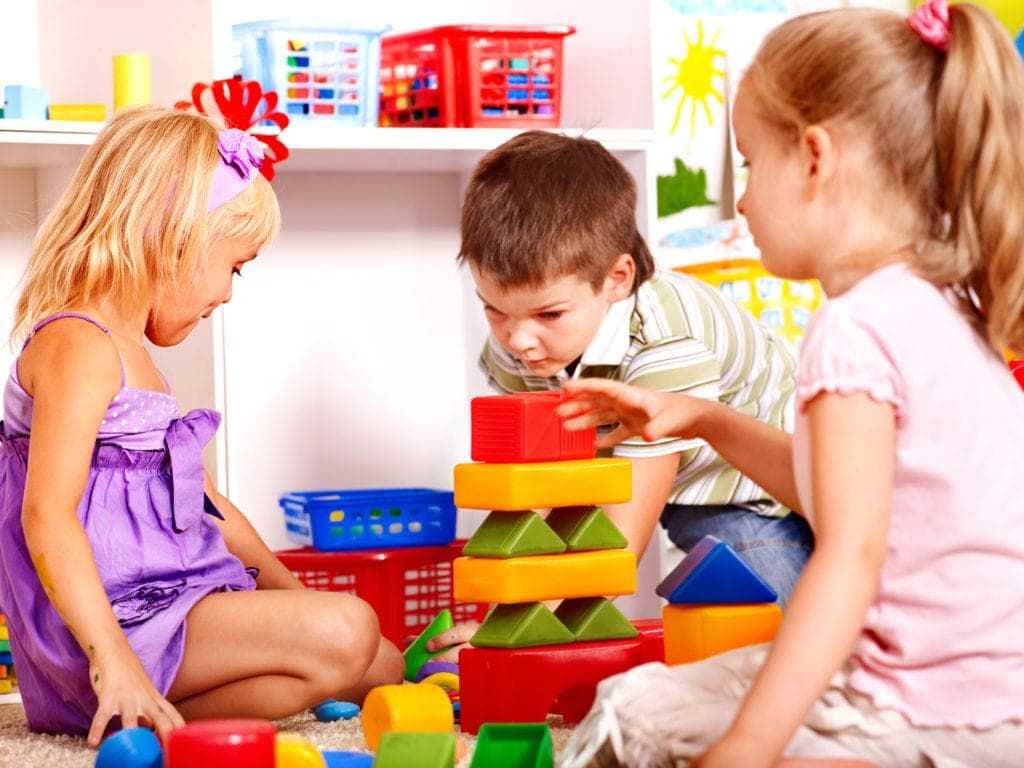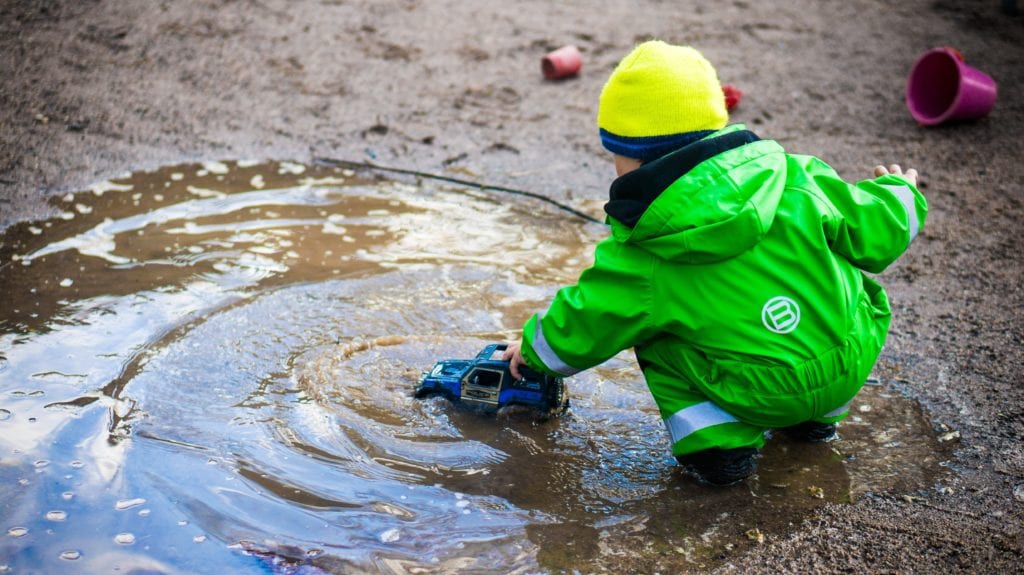STEAM activities (Science, Technology, Engineering, Art and Maths) are activities that creatively educate with a hands-on approach. STEAM learning happens every day as children explore, play and investigate the world around them, and research shows a positive relationship between early STEAM experience and future success in school. Get your child off to a good start with these easy STEAM activities you can do at home.
Slime
The slime craze will be well and truly among your young ones once you make some of your very own. Not only is it insanely fun to make and play with, but it also has some fantastic educational outcomes for your young ones. Playing with slime is a form of sensory play that promotes fine motor skills, coordination, the five senses and exploration. It’s a great STEAM activity as it is based on science, has an element of art and even incorporates mathematics.
Bubble blowing
It’s a well-known fact that bubbles have the ability to capture the attention of young minds, and this simple invention is a great way to turn a STEAM activity playtime. It’s science-based, the shapes and colours of the bubbles incorporate art and it can be mathematical if you make it. You can buy bubble mixture, or you could make your own! Then you could create your own tools or use household objects to blow different shapes of bubbles. This activity opens up a whole range of STEAM relevant conversations.
Create a ramp – marble run
Kids love nothing more than being thrown a bunch of materials and being told to go wild, and this activity is perfect to foster the engineer in every child. All you need is a marble (preferably larger ones, to lower the choking hazard) and a bunch of cardboard that you will have around the house. If you have a cereal or chip packet box, this makes the perfect shell for the marble run. Kids can then cut and glue or tape the marble tunnel lane into the shell. How fast can their marble get down the track? Is there a way they could make it quicker? One of the best STEAM activities for challenging young minds!
Water play
Something as simple as filling up a bucket of water can provide hours of fun and very educational conversations between you and your children. Not only does water play develop motor skills, problem solving skills, language development and social emotional growth, it weaves together science, mathematics and most importantly fun. It teaches children language such as full, empty, sink and float, whilst opening conversation about volume, motion and life cycles.
Outdoor scientist
This big wild world is home to so many wonderful and interesting things, and some of these are in your very own backyard or local park. Role play with your children and pretend to be scientists for the day: give them a hat and a magnifying glass and turn the back yard into a science experiment. Lay down and watch the clouds; see if you can spot animals in the clouds or watch how quickly they move. You can look through the grass to spot ants, check the garden for butterflies and collect different types of leaves. All options provide opportunity for science and math related conversations.
Gardening
Growing plants is a fantastic science activity to do with your children that is budget friendly, interesting and exciting. You can grow new life in an old ice-cream tub, an egg-shell, a little pot or out in the garden and you could grow sunflowers, lettuce, beans, tomatoes, potatoes, pumpkins, watermelons or strawberries. These options are easy to grow and offer the most chance of success for your little ones. This STEAM activity opens up a world of knowledge and conversation about the process of growth from a seed to the table and sustainability.
Scientist station – edible and non-edible
Creating a station that is easily accessible and full of age appropriate activities is a great way for your children to have fun, be inspired and take on the role of a scientist. There are so many fascinating and easy experiments that you can do, like change the colours of flowers with dye, make paper airplanes, make a volcano, build your own windmill or even just provide a bunch of child-safe ingredients to let your little one go crazy with mixing and making. You could even conduct experiments that are edible, like creating phases of the moon with Oreos, making edible soil layers or cooking S’mores in a solar oven. Yum! Don’t forget to add a scientist laboratory coat and goggles to your station to help your child really get into the role.
5 senses rotations
The five senses are vitally important to everyday function, and also offer a great teaching moment to have with your children. You could do these by focusing on a different sense on different days or creating a sense station. For sight, you could play picture matching games, play I-Spy, create a collage or discuss and explore different types of eye wear like blindfolds, sunglasses, 3D glasses and goggles. For sense of smell, you could create a collage of good and bad smells, bake different flavours of cakes or muffins, or even smell stinky socks. For sense of sound, you could listen to music, listen for the sounds you can hear outside, play with a tape recorder or experiment with musical instruments. For sense of taste, you can try different types of foods and talk about their textures, taste different flavours of jelly beans, cook with your child or make edible jewellery. Lastly, for sense of touch you can create a touch-and-feel box, explore different textures or make your own slime. All of these sense STEAM activities open up endless conversation and opportunity for education.
Engineer activities
Building blocks and Lego have been around for years and are secretly fantastic at improving your child’s ability to think mathematically, their fine motor skills, spatial awareness, creativity and language skills. You could set tasks such as asking your child to build you a bridge that will go from A to B to allow a toy car to cross, or build you a house for their Barbie doll to sleep in. You could supply the tools of Lego, wooden blocks, Mobilo or even rocks and watch your child’s engineering skills come to life. Don’t forget to question them about why they are doing certain things to initiate those conversations that will allow them to practice use of mathematic and scientific language.
Process art
Kids love art, and as a parent or caregiver its important not to focus on the end result but to focus on the process. Your child expressing themselves artistically and enjoying the ‘doing’ offers many more learning experiences when the end result isn’t stipulated. A simple Google search comes back with hundreds of process art ideas; one of our favourites is painting on different surfaces like wood, plastic, paper, paper towel, rocks or shells. This activity opens up science-based conversations about textures, different types of paints, and maths topics like area and depth.
Shaving Cream or Mud activity
For those with children that don’t mind getting a little messy, shaving cream or simple mud can be a great tool for play. Add in some little toy vehicles and watch the kids go mad. These promote learning about texture, colours and imaginary play. You could even mix these together to create a type of paint to plan and make a map for the vehicles to travel on. Your children will be exposed to areas of science, technology and maths. It will be so much fun the kids won’t even realise that they are learning at the same time.
Robot
If you have a little bit more of a budget, you can purchase some great simple robots for your kids to play with. A favourite is the BeeBot; it has a simple and child friendly operation system that will teach your child about control and topic-language like directions and programming. You can create obstacle courses with your children’s teddy bears, building blocks, books or with kitchen materials like Tupperware containers. This activity will allow your child to experience technology when coding, use mathematics for spatial awareness, and directions and engineering to build their own obstacle courses. A fun activity that promotes all aspects of STEAM that kids are guaranteed to love.
Need more inspiration or products for your STEAM activities?
Check out the range of STEAM based activities and products at Flying Fox Studios, 749-753 Southpine Road, Everton Park. Book a class or shop online now!
School holiday STEAM workshops – BOOK NOW for the holidays!
Join Flying Fox Studios in the school holidays for one of Brisbane’s longest running, and most popular school holiday workshop programs. Workshops cover a wide range of fun and creative topics such as visual arts, engineering, craft, science, music, technology, design and construction.
As a professional children’s creative studio with a STEAM (Science, Technology, Engineering, Arts, and Maths) focus running through all they do, their workshops build on their passion for inspiring creative and fun learning in childhood.
A new holiday workshop program is scheduled each school holiday period, with workshops typically running over a 6 day schedule.
“12 Best STEAM Activities for Children Under 7” was brought to you by Brisbane’s Flying Fox Studios.
This article featured in Issue 33 of our printed magazine, published April 2019.

